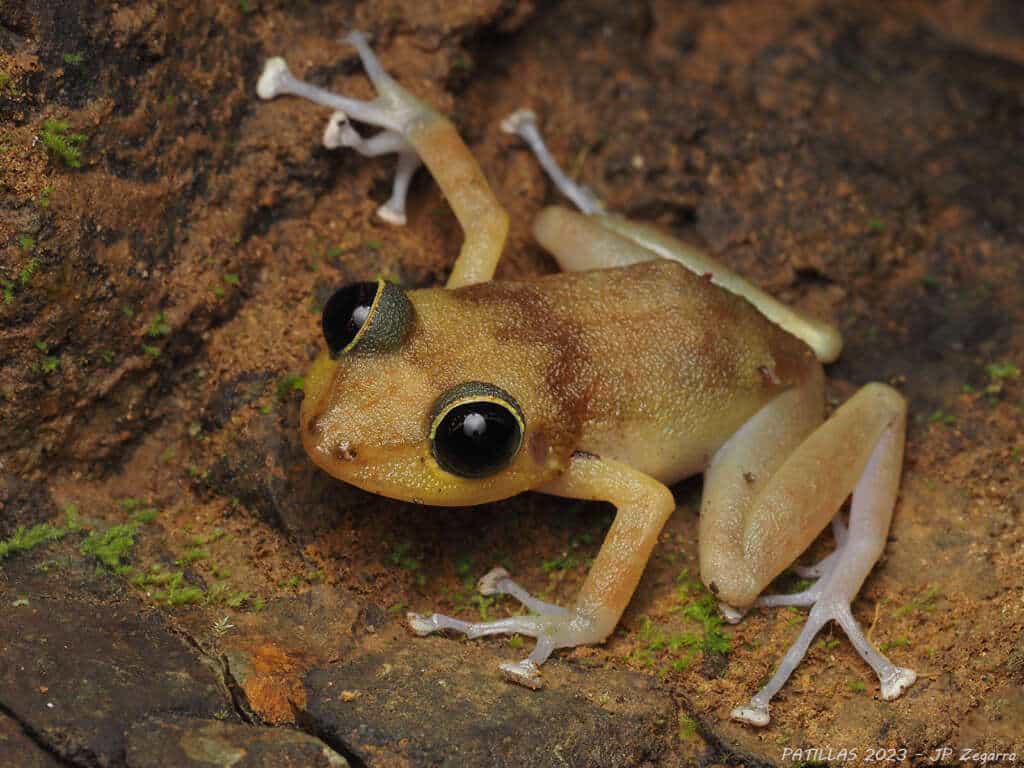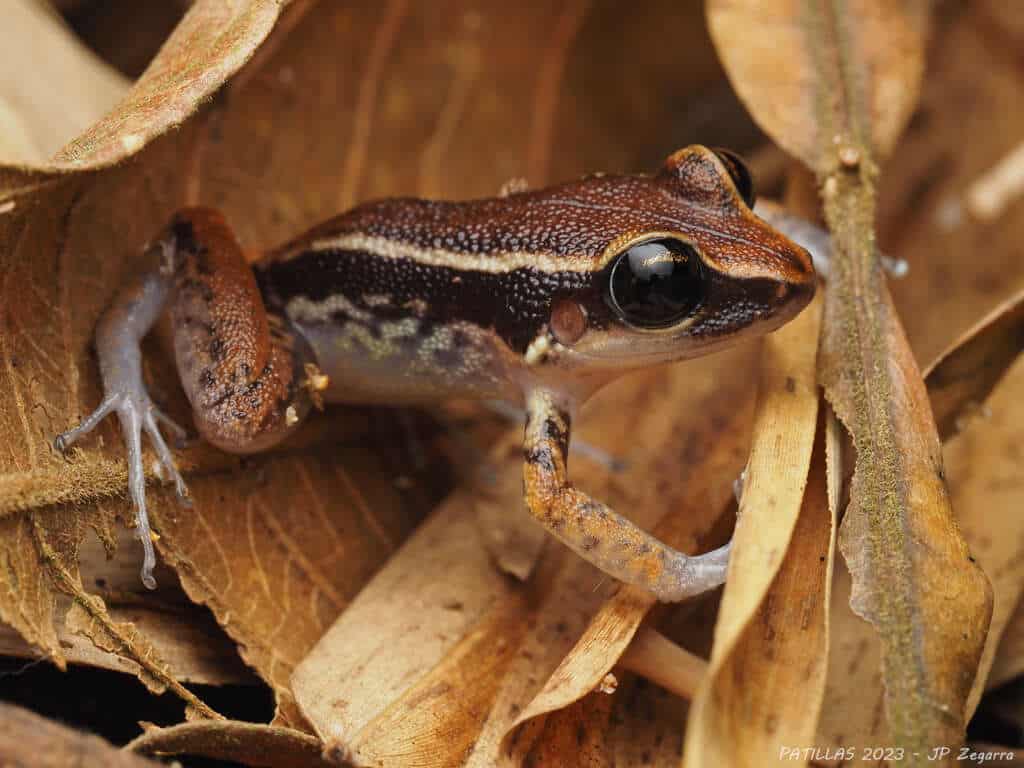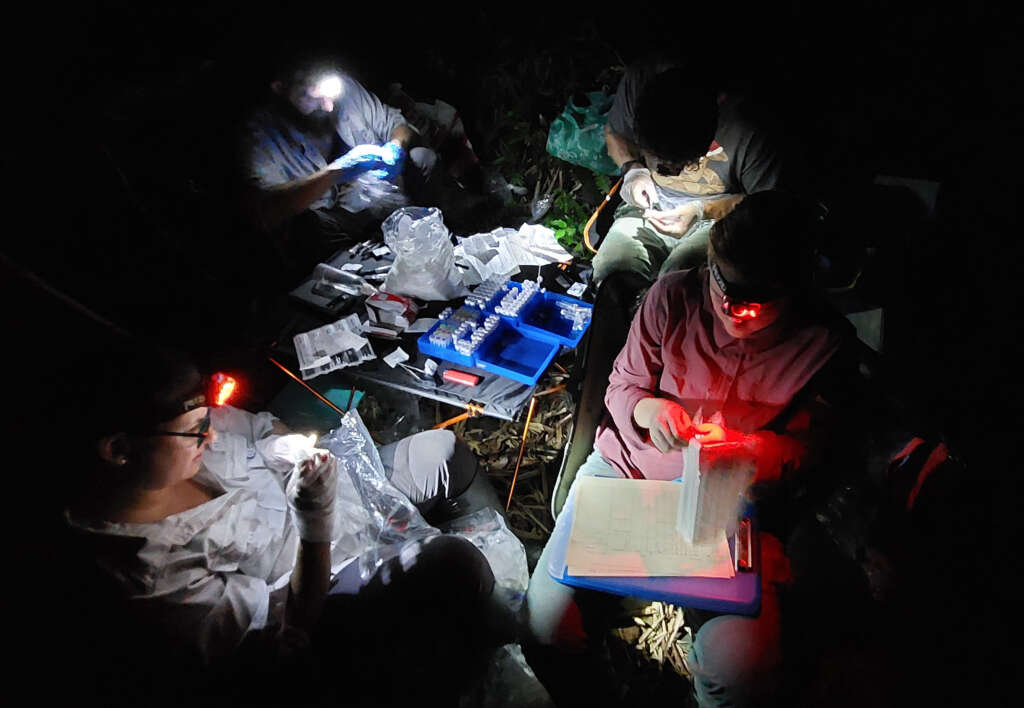Icaco Valley Frog Survey, 11th June 2023
A cooperative agreement between the Caribbean USFWS and the University of Florida (UF) just completed the last coquí guajón (E. cooki) survey for this project at one of the populations within Las Casas de la Selva property.
Last time this population was surveyed was back in 2013, with Norman Greenhawk. Despite the recent heat wave, the team led by Dr. Ana Longo and her graduate students (https://thelongolab.com/), was able to catch and release 30 coquí guajón frogs.

Coquí guajón, Eleutherodactylus cooki, juvenile in Icaco Valley, Patillas, Photo by JP Zegarra
Survey effort included general frog counts, genetic samples, chytrid fungus swabs and tick prevalence. This population is quite unique since it is one of the few known coquí guajón populations to co-occur with both the coquí caoba (E. richmondi) and the coquí melodioso (E. wightmanae), among other species.
Another peculiarity is that this coquí guajón population lacks ticks, perhaps because of its protected habitat and farther distance from human disturbance. In general, this coquí guajón population seems in good condition, but there are concerns with the potential effects of climate change on all coquí frog species. Ultimately, the consequences of these anomalies in demographic responses might not be immediately apparent, and can potentially affect reproduction and recruitment in the coquí guajón populations and other species as well.
Thanks to Jan P. Zegarra (Fish & Wildlife Biologist) for the info and these great photos from this recent survey, care of USFWS-Caribbean Ecological Services Field Office.




